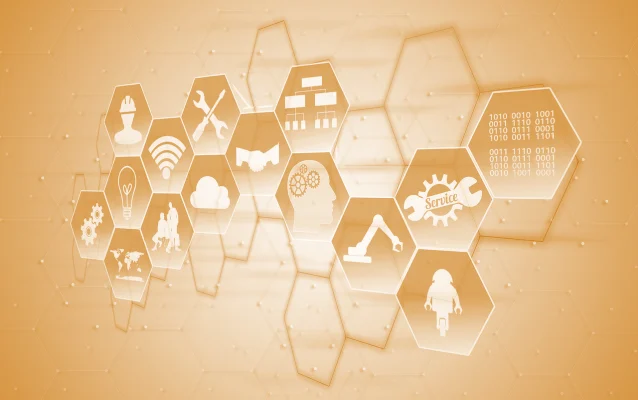When it comes to real-time communication in smart devices, developers often weigh the Web Real-Time Communication (WebRTC) protocol and WebSocket against each other. Both technologies allow fast, two-way data exchange, but they serve different purposes. Here’s everything you need to know about WebRTC vs. WebSocket in IoT.
What is WebRTC?
WebRTC is a technology that allows devices to communicate directly with each other over the internet. It was originally built for web-based video and voice calls, but it also works well for IoT devices that need real-time data exchange, such as smart security cameras, remote-controlled robots, video-enabled doorbells, and live-streaming dashcams. Unlike traditional methods that rely on a central server to relay information, WebRTC allows devices to connect peer-to-peer, which helps reduce delays and network congestion. The protocol supports audio, video, and general data transfer, making it useful for smart cameras, remote monitoring, and interactive IoT applications.
Since WebRTC connects devices directly, it needs a way to handle firewalls and private networks. This is done using network address translation (NAT) traversal techniques like session traversal utilities for NAT (STUN) and traversal using relays around NAT (TURN), which help devices find and establish a path to each other. More on that later.
Pros of WebRTC
WebRTC comes with certain inherent advantages over many other protocols, such as:
- Low latency: WebRTC enables real-time communication with minimal delay.
- Fast peer-to-peer communication: WebRTC reduces reliance on central servers, improving efficiency.
- Supports multiple data types: WebRTC handles audio, video, and general data transfer.
- Built-in security: WebRTC uses datagram transport layer security (DTLS) and secure real-time transport protocol (SRTP) for encryption, keeping data protected.
- Reduces network load: Since data flows directly between devices, WebRTC lightens the burden on servers.
- Browser and device support: WebRTC works across major browsers and can be implemented in mobile and embedded IoT devices.
Cons of WebRTC
Naturally, WebRTC has some disadvantages. Just a few include:
- Complex setup: WebRTC requires STUN and TURN servers for NAT traversal, making implementation trickier.
- Firewall and network issues: Some enterprise or tightly secured networks may block or restrict WebRTC traffic.
- Higher bandwidth usage: Since WebRTC operates without a central relay, multiple connections can increase bandwidth consumption.
- Not ideal for battery-operated devices: WebRTC requires continuous connectivity for real-time interactions, making it inefficient for devices that briefly go online to send data to the cloud before shutting off to conserve battery.
I will talk about these issues more later in the article.

What is WebSocket?
WebSocket is a communication protocol that creates a continuous connection between a client and a server, allowing data to flow back and forth instantly. Unlike traditional HTTP requests, which require a new connection for every interaction, WebSocket keeps a single connection open, reducing delays and making real-time communication more efficient. This makes it especially useful for IoT devices that need constant updates, such as smart home systems, industrial sensors, and live monitoring applications.
Since WebSocket relies on a server to manage communication, it’s easier to scale than peer-to-peer approaches like WebRTC. Devices don’t need to worry about firewalls or network restrictions as much, since everything passes through a central server. WebSocket also supports both text and binary data, making it flexible for different IoT use cases. Security is handled using transport layer security (TLS) encryption, the same technology that protects HTTPS websites, keeping data safe as it moves between devices and servers.
Pros of WebSocket
WebSocket has a lot of useful features like:
- Persistent connection: WebSocket keeps a continuous link open, avoiding the need for repeated requests.
- Low latency: WebSocket enables fast, real-time data exchange between IoT devices and servers.
- Scalability: WebSocket works well with many devices since the server manages connections.
- Firewall-friendly: WebSocket is less likely for networks to block compared to peer-to-peer methods.
- Supports text and binary data: WebSocket can handle a variety of data types, making it versatile.
- Simpler implementation: WebSocket is easier to set up than WebRTC since it doesn’t require NAT traversal.
Cons of WebSocket
As you might expect, WebSocket isn’t one-size-fits-all. There are still issues like:
- Relies on a server: WebSocket always needs a central server, which can introduce extra costs and potential points of failure.
- Higher overhead for small messages: Keeping a persistent connection open may use unnecessary resources for low-traffic applications.
- Less efficient for high-bandwidth needs: WebSocket is not ideal for video or large-scale data streaming compared to WebRTC.
- Latency can vary: While generally fast, WebSocket’s performance depends on server load and network conditions.
- Single point of failure: If the server goes down, all connected devices lose communication.
More info on this later.
WebRTC vs. WebSocket overview
Now that you understand the basics, let’s go through the major features and considerations in both WebRTC and WebSocket one at a time, starting with the type of communication they offer.
1. Communication
The biggest difference between WebRTC and WebSocket comes down to how they handle communication. As I mentioned, WebSocket creates a continuous connection between a client and a server, allowing real-time, two-way data exchange. WebRTC, on the other hand, is designed for peer-to-peer (P2P) communication, in which devices connect directly to each other without relying on a central server.
Because WebRTC is peer-to-peer, it reduces the need for a dedicated server to relay data, which can improve efficiency and lower network congestion. However, setting up a WebRTC connection often requires STUN and TURN servers to help devices discover each other and handle firewalls. WebSocket, in contrast, follows a client-server model, in which all communication goes through a central server, making it easier to manage but also introducing potential bottlenecks.
2. Data types
WebRTC is designed to handle a mix of audio, video, and general data in real time. This makes it a great choice for applications like live video calls, streaming, and other peer-to-peer interactions that require low latency. It uses specialized protocols like SRTP for secure media transmission and specialized data channels for sending non-media data, such as files or sensor readings. Because of its peer-to-peer nature, WebRTC is optimized for high-bandwidth, time-sensitive data the system must deliver with minimal delay.
WebSocket, on the other hand, is more focused on text and binary data than on media streaming. WebSocket is often used for transmitting structured data like JSON or binary formats, which are common in IoT applications in which devices need to send commands, receive updates, or exchange sensor data efficiently. This makes it ideal for real-time messaging, IoT device control, and continuous status updates.
3. Latency
WebRTC is built for ultra-low latency. This is why WebRTC is widely used for live video, voice calls, and interactive applications in which even slight delays can be disruptive.
WebSocket also offers low latency, but it typically isn’t as fast as WebRTC for real-time media. Since WebSocket relies on a client-server model, every piece of data must pass through the server before reaching its destination. This extra step introduces some delay, but for applications like chat, notifications, or IoT telemetry, the difference is usually negligible.
WebSocket excels when consistent, ordered data delivery is more important than absolute speed.
4. Bandwidth
When it comes to bandwidth usage, WebRTC generally requires more, especially for video streaming. High-quality media demands a steady flow of data, and since WebRTC operates over the user datagram protocol (UDP), WebRTC prioritizes speed over reliability. This can result in minor data loss but ensures smooth playback. WebRTC also adapts dynamically to network conditions, adjusting bitrate to maintain performance.
WebSocket, in contrast, is more bandwidth-efficient for small, frequent messages. It uses the transmission control protocol (TCP), which ensures all data packets arrive in order but can introduce slight delays due to error correction. This makes WebSocket a better choice for IoT devices that send periodic updates rather than high-bandwidth streams.
5. Security
WebRTC has built-in security, ensuring that all media and data are end-to-end encrypted. It uses DTLS to encrypt data channels and SRTP to protect audio and video streams. This means that even if someone intercepts the data, they won’t be able to read it. Since WebRTC primarily relies on peer-to-peer connections, there is also less risk of data exposure through a central server.
WebSocket does not enforce encryption by default, but it supports TLS. This encrypts data as it moves between the client and server, similar to how HTTPS protects websites. However, because WebSocket follows a client-server model, the security of the connection depends on how well the server is configured and protected.
6. NAT traversal
WebRTC relies on peer-to-peer connections, but many devices sit behind routers or firewalls that block direct communication. To solve this, WebRTC uses STUN to help devices discover their public IP addresses and connect directly when possible. If that doesn’t work, it falls back on TURN, which routes data through a relay server. While TURN ensures a connection, it increases latency and uses more bandwidth.
WebSocket, on the other hand, doesn’t need NAT traversal because it follows a client-server model. Since the connection is always initiated by the client, it works smoothly even in restricted networks or behind firewalls. As long as the WebSocket server is accessible, devices can communicate without extra setup. This makes WebSocket easier to deploy in environments in which firewalls might block direct peer-to-peer connections.
7. Scalability
WebRTC’s peer-to-peer architecture does not scale well for large networks. As more devices connect, bandwidth usage increases rapidly because each participant must maintain multiple direct connections. This makes WebRTC best suited for small-scale applications like one-on-one video calls or small group interactions.
WebSocket, on the other hand, is more scalable. A single WebSocket server can manage thousands – even millions – of connections, since all communication is routed through it. This makes WebSocket a better choice for large-scale IoT networks, real-time dashboards, or messaging platforms in which many devices need to send and receive updates without overloading individual connections.
For an overview of all these differences and features, see the table below:
Feature | WebSocket | WebRTC |
Primary Use | Real-time, bidirectional communication | Real-time, peer-to-peer communication |
Communication Model | Client-Server (typically) | Peer-to-peer (can involve STUN/TURN servers for NAT traversal) |
Data Types | Text (JSON, XML) and binary data | Audio, video, and arbitrary data |
Latency | Relatively low, depends on server proximity | Very low, designed for real-time applications |
Bandwidth Usage | Typically quite low, but can be higher due to overhead (e.g., HTTP handshakes | Optimized for bandwidth efficiency, especially for media streams |
Security | Can be secured with TLS (wss://) | Built-in security features (DTLS encryption) |
NAT Traversal | Requires server-side handling or proxies | Built-in mechanisms (STUN, TURN) for traversing NATs |
Scalability | Can be challenging to scale for many concurrent connections (requires robust server infrastructure) | More scalable for peer-to-peer communication, offloads server burden |
Browser Support | Widely supported in modern browsers | Widely supported in modern browsers (with some variations in codec support) |
IoT Suitability | Suitable for applications in which a central server is involved (e.g., device management, data aggregation) | Suitable for direct device-to-device communication (e.g., sensor networks, remote control) and media streaming from devices |
Example IoT Use Cases | Sending sensor data to a cloud server, controlling devices remotely via a web interface | Direct communication between sensors, peer-to-peer video conferencing between devices, real-time remote control of robots |
Which protocol is best for IoT?
We’re finally at the most important question: which protocol should you use in your IoT application?
Here are some factors to consider:
- Device constraints: WebRTC, particularly for media, can be resource-intensive. Consider CPU and memory limitations of IoT devices. WebSocket is generally lighter weight.
- Network topology: If devices are behind NATs, WebRTC’s built-in NAT traversal is a significant advantage. For simpler setups or situations in which a central server is always involved, WebSockets might be sufficient.
- Data type: If you primarily need to exchange text-based data (e.g., sensor readings), WebSockets are often simpler to implement. If you need to stream media or other binary data, WebRTC is more efficient.
- Security: You can secure both, but WebRTC has DTLS built-in. Ensure proper implementation of security measures for either technology.
In short, the choice between WebSocket and WebRTC depends heavily on the specific requirements of your IoT application. For many simple IoT data exchange scenarios, WebSocket is a good choice. For low-latency, peer-to-peer communication, especially involving media, WebRTC is often preferred.
Use cases for WebRTC vs. Websocket
Since which protocol you would use depends on the needs of the application, it’s worthwhile talking about some typical applications of each option.
When to use WebRTC
Doorbell cameras
Doorbell cameras can rely on WebRTC to provide instant, real-time video feeds when someone rings the bell. Because WebRTC supports peer-to-peer connections, it reduces latency, allowing homeowners to see and speak with visitors without noticeable delays. This is especially useful for smart home security systems that need fast communication.
Security cameras
Security cameras also benefit from WebRTC’s low latency, making it ideal for live surveillance. Whether it’s monitoring a home, office, or warehouse, WebRTC ensures smooth, real-time streaming without needing to send video through a central server. This not only speeds up response times but also reduces bandwidth costs by avoiding unnecessary data relay.
Smart home robot cameras
Smart home robot cameras, like those in robot vacuums and pet monitoring devices, use WebRTC to provide live video streams and remote control functions. Whether the user is checking on a pet while away or steering a vacuum to a specific area, WebRTC enables low-latency communication, making interactions feel instant and natural.
Dashcams
Dashcams with live streaming capabilities also take advantage of WebRTC to provide instant video feeds from vehicles. Fleet management companies and individual drivers can monitor road conditions, respond to incidents in real time, and even use WebRTC’s data channels to send alerts or driving insights without relying on slower server-based communication.
When to use Websocket
If your use case can be solved with WebSocket, you can likely achieve similar functionality using WebRTC’s Data Channel. Both enable real-time, low-latency data exchange, but WebRTC is optimized for peer-to-peer communication, whereas WebSocket follows a client-server model. If direct device-to-device communication isn’t required, WebSocket may be a good option. Here are some examples of use cases where WebSocket is a strong fit:
Smart home automation devices
Smart home automation devices, like smart thermostats, lights, and locks, use WebSocket to maintain a constant connection with a central hub or cloud server. This allows users to adjust settings instantly from their phones and receive immediate feedback, like a lock confirmation or temperature change.
IoT sensors and monitoring systems
IoT sensors and monitoring systems, such as air quality sensors, weather stations, or industrial equipment trackers, rely on WebSocket for real-time data updates. Since WebSocket keeps an open connection, devices can continuously send status reports to a server without the overhead of constantly opening new connections.
Live chat and notifications
Live chat and notifications for IoT apps, like smart doorbells and security systems, often use WebSocket to send motion alerts, visitor notifications, or system warnings to users. WebSocket’s persistent connection ensures that alerts are delivered instantly, without the delays of traditional HTTP polling.
Vehicle tracking
Vehicle tracking and fleet management systems use WebSocket to stream GPS data and diagnostics in real time. Since vehicles report their location and status to a central server rather than communicating directly with each other, WebSocket’s client-server model makes it a good fit for these kinds of use cases.
When to use both WebRTC and Websocket
There are several situations in which combining WebRTC and WebSocket makes sense, as they complement each other well. Here are a few examples.
Smart security camera
A smart security camera might use WebRTC for live video streaming while using WebSocket to handle commands and status updates. For example, a user watching a live feed from their doorbell camera could use WebRTC for the video stream but rely on WebSocket to send commands like turning on a light or triggering an alarm.
Home devices
Home devices like robot vacuums or pet cameras could use WebRTC to provide real-time video feeds while relying on WebSocket for movement controls and system updates. WebRTC ensures smooth, low-latency video, while WebSocket allows the user to send commands like “start cleaning” or “go to this room” with a reliable, persistent connection.
Telehealth
A telehealth application could use WebRTC for video calls between doctors and patients while using WebSocket to send medical data, chat messages, or device status updates. This setup ensures real-time communication for video while allowing for structured, reliable data exchange in parallel.
Gaming
A real-time multiplayer game could use WebRTC for in-game voice or video chat while using WebSocket to synchronize game events, player movements, and match updates. This allows for smooth communication between players while ensuring that game logic is managed efficiently through a central server.
In these scenarios, WebRTC handles media streaming, while WebSocket manages structured data and controls.
Final thoughts
WebRTC and WebSocket, despite their similarities, are two different protocols with distinct features and use cases. Hopefully you now have a better understanding of both and how they can interact in the world of IoT.
Read our other resources
We’ve published a range of resources for our community, including:
- What is WebRTC in video streaming?
- What to know about WebRTC data channels for IoT
- Understanding WebRTC vs. RTSP for Video Streaming








